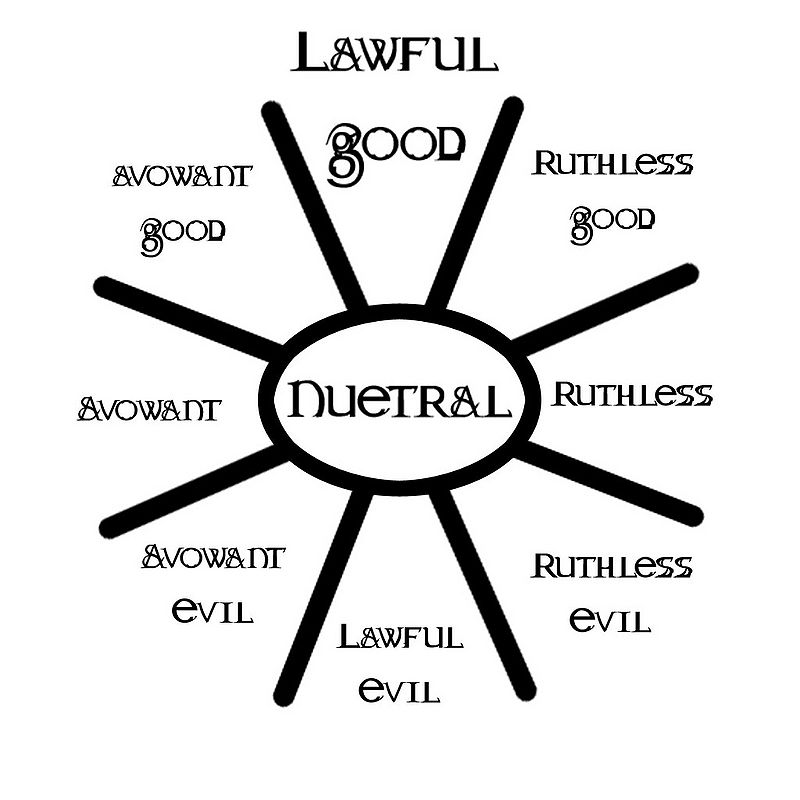MRPG Intent
The intent system guides your character's alignment and determines how NPCs will respond to them. Intent is not a setting, rather, your actions reveal your intent. Therefore, it is the intent of the player, not the character, that sets the course.
Contents
Intent and Alignment
There are essentially only three Intents: good, evil, and neutral. Your Alignment is how you go about your intent: Avowant, Lawful, or Ruthless.
Intent
Intent is what you seek to accomplish in life.
- Good
Remember that the Mage Wars were not a battle between good and evil. This does not mean there weren't good and evil people fighting in them, but the Mage Wars were about power. If you choose to be good, you will make your decisions with that in mind.
- Evil
You pretty much don't give the furry crack of a rat's behind about others, as long as you get what you want.
- Nuetral
Everyone starts off as true neutral, but it is impossible to remain neutral. You will, as soon as you make a decision, give yourself one of the eight intents.
Alignment
Alignment determines how you tend to go about solving problems.
- Avowant
An avowant character believes that the end justifies the means. It will do whatever is expedient to accomplish an objective: break the rules, lie, cheat, steal, or fight; if it gets the job done, it doesn't matter.
- Lawful
Lawful players always follow the rules. Whatever the law of the land is, they use it as their guide.
- Ruthless
Might equals right! (Or 'wrong', if you happen to be Ruthless Evil). There is only one way to accomplish any objective: the sword! In this case, 'the sword' means fighting, destruction, etc.
Gameplay
The majority of players will find themselves on either the neutral line or the lawful line. It's going to take a fair amount of effort to get yourself into 'evil' territory. During the tutorial quest, players will essentially determine alignment through their choices on the quest. This can be changed later through concerted effort. For example:
Three players encounter a crude altar deep in a dungeon. The avowant player ignores it, because it is not part of his objective. The lawful player purifies it, because he cannot allow it to exist. The ruthless player smashes it, because he must destroy anything opposed to his alignment.
Effects
- Non-Player Characters: will typically give the best prices (highest discounts) to good-aligned characters. Lawful Good characters may be allowed into areas from which other players are kept out, and be given additional information from quest-givers.
- Many NPCs will not deal with Lawful or Ruthless Evil players at all.
- Quests: some quests may have different objectives depending on the character's alignment. In the example: 'ignore', 'smash', or 'purify' are popular choices. Additionally some NPCs encountered in quests can either be killed or spared for alignment points.
- Quest Endings: Quests may also have multiple endings based on what alignment the party chooses to pursue. Typically speaking the Lawful alignment is preferable.
- Bounty: Lawful Good players participating in the Bounty system have the ability to cancel bounties on themselves, while still collecting them on others.
- Lawful Evil players may post bounties on Lawful Good players that cannot be canceled.
- Public Areas: Guards in most cities will attack Ruthless Evil players on sight. Some cities may have a different attitude. Water's Grasp, for example, is more tolerent, but Sun's Beacon is not.
Classes
Paladins must maintain a Lawful Good alignment. Failure to do so will leave them unable to use most of their cool paladin abilities.
